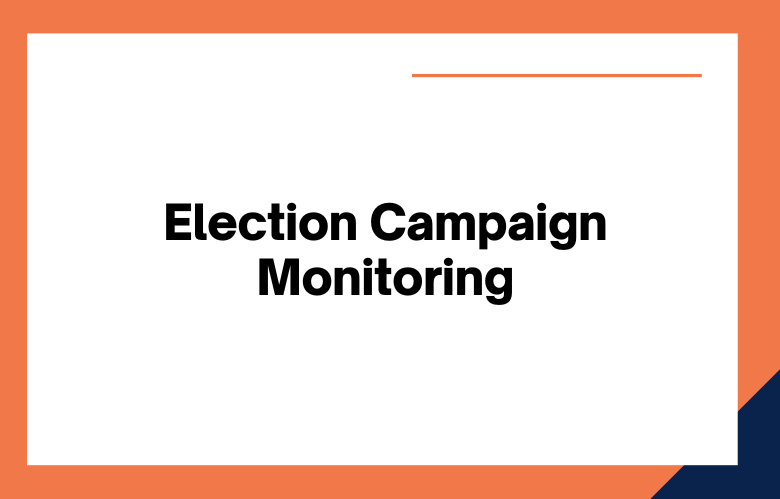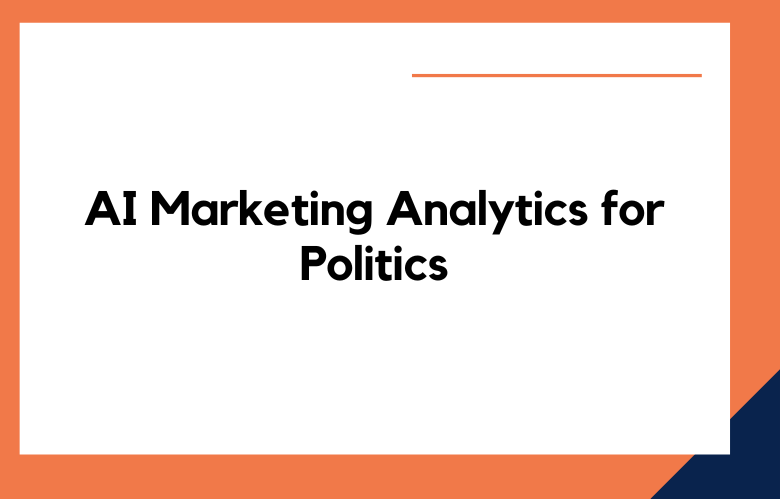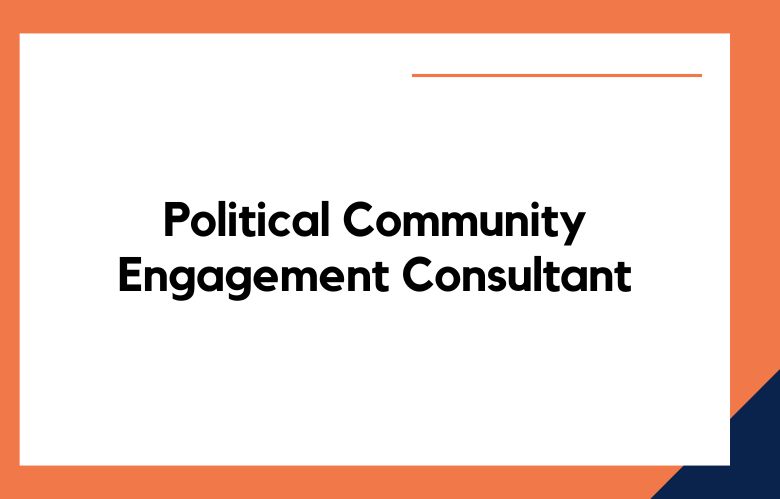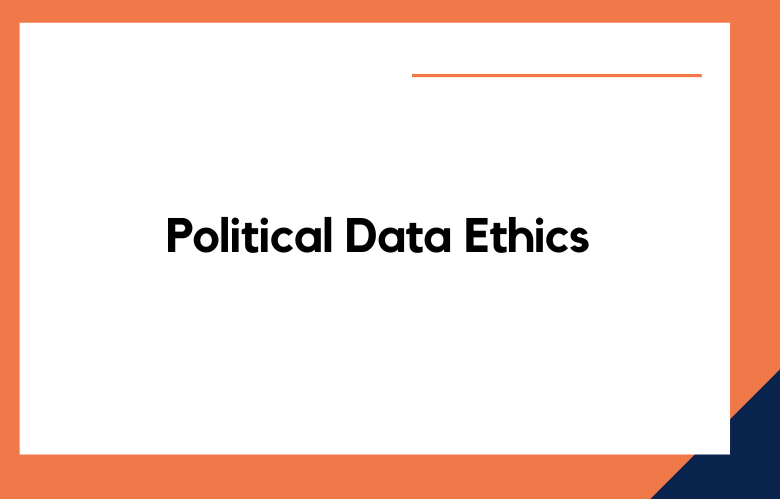When it comes to elections, having the correct information is critical. Knowing who is running and their platforms can help you decide when it’s time to cast your vote.
However, it’s also important to be aware of any changes or updates in a candidate’s campaign that may affect their position on a particular issue.
This is where election campaign monitoring comes in—it helps you stay up-to-date on any new developments or news related to a candidate so you can make sure you’re making the best possible decision for yourself and your community.
Election campaigns are becoming increasingly complex and challenging to monitor, given the sheer number of candidates vying for office and the vast array of digital and traditional media they use to get their message out.
It’s essential to understand the different types of monitoring that can be done to track election campaigns effectively. Let’s look at the most common types of election campaign monitoring.
Media Monitoring?
Media monitoring is essential for companies, organizations, and other entities looking to track their public relations and brand reputation.
Analyzing news and social media content can help identify critical trends or topics that could influence policy, decisions, or strategy.
We can also provide insights into customer sentiment about a product or service and uncover potential opportunities for engagement with influential people or outlets.
Media monitoring can uncover potential threats from competitors or other external factors.
Organizations can be aware of current events that impact their business by watching the ever-changing landscape of media sources (e.g., TV, radio, print publications, and online/social media).
This includes changes in public opinion regarding a particular sector or industry, criticism of a company’s products/services, and changes to regulations that may affect the organization’s operations.
Media monitoring also allows companies to keep tabs on how their competitors are doing in the market, including any new products they’ve launched or announcements they’ve made.
Broadcast Monitoring?
Broadcast monitoring utilizes specialized software and technologies to monitor television and radio broadcasts.
Through this process, organizations can monitor their competitors’ media campaigns, analyze industry trends, and ensure that their content meets regulatory standards.
Moreover, it helps them gain insights into their target audiences’ viewing and listening habits, allowing them to develop more effective marketing strategies.
Broadcast monitoring involves various activities, from tracking broadcast time slots to analyzing audience ratings and identifying keyword mentions in scripts or audio recordings.
It can be done manually or through automated systems, both of which have benefits and drawbacks.
Manual monitoring requires extensive knowledge of broadcast media, while automated solutions produce accurate results quickly but cannot detect nuances that an algorithm may miss.
Online News Tracking?
Online news tracking is keeping track of news related to a particular topic or subject to stay informed and up-to-date.
It can use search engines like Google, social media sites like Twitter, or other specialized tools like RSS readers.
By following essential topics, you can stay on top of the latest news and developments that interest you.
For example, if you’re an avid sports fan, online news tracking can help you stay updated with the latest scores, game analysis, and injury reports for your favorite teams.
Or, if you’re an investor who wants to follow financial news, online news tracking can keep you in the loop about stock market trends, economic forecasts, and corporate developments.
Social Media Monitoring?
Social media monitoring is an increasingly important tool for businesses of all sizes.
It enables organizations to track and analyze conversations on social networks, providing insights into customer sentiment, trends, opportunities, and threats.
By following discussions about their brand or products across various platforms like Twitter, Facebook, Instagram, YouTube, Reddit, and more, companies.
They can gain valuable insights into how customers interact with their products, services, and experiences.
With this information, companies can decide how to better engage with their customers, increase marketing effectiveness, and identify potential revenue opportunities.
Social media monitoring also provides visibility into competitors’ social media activities, which can help determine market share by product or service type.
We allow companies to respond to customer inquiries and proactively offer assistance.
Analyzing Your Election Campaign With Advanced Monitoring Strategies?
As a political candidate, monitoring your election campaign closely to evaluate your progress and make informed decisions is critical. Advanced monitoring strategies enable you to analyze your campaign more effectively, addressing issues that could negatively impact your chances of winning. This is where data-driven analysis can be crucial in shaping your election campaign.
One of the most effective advanced monitoring strategies is social media analysis. With millions of people accessing social media daily, this platform can be a valuable resource for gathering information about voters’ attitudes, preferences, and opinions. By analyzing social media data, you can understand what voters care about and tailor your campaign messaging to better resonate with them.
Inside Look: What Election Campaign Monitoring Can Do For You
Amid the political chaos, election campaigning has become more intense and aggressive. In line with this development, the need for effective campaign monitoring has steadily increased since it is essential to stay on top of every campaign issue as it arises, down to every minute detail. This practice, which has become common for political parties, campaign teams, and other stakeholders, is the surest way to stay ahead in such highly competitive situations.
As the name implies, election campaign monitoring involves the constant tracking and analysis of a candidate’s and their opponents’ campaigns to glean insights, spot trends, and strategize accordingly. It monitors every campaign activity across different platforms, including social media, news, and opinion polls, with a keen eye on conversations, messaging, and themes. By tracking such activities, campaign teams can tell which messages resonate with voters and which do not, allowing them to make informed and data-driven decisions.
How To Use Big Data to Optimize Your Election Campaign Results
In today’s world, data is everywhere, and so is the need to analyze and manage it effectively. One of the most critical areas that benefit from the power of big data is election campaigns.
Big data analytics can help election campaigns optimize their strategies in several ways. From understanding voters’ behavior and sentiment to identifying key issues that resonate with them, big data can provide insights that traditional campaigning methods cannot.
One of the most significant advantages of using big data is targeting and personalizing communication with voters. With the help of data analytics, election campaigns can create targeted messages based on voters’ demographics, interests, and voting history. These messages can be delivered through multiple platforms, including social media, email, and mobile devices, ensuring voters receive information most effectively.
The Benefits of Real-Time Election Campaign Monitoring
Increased Transparency:
One of the primary benefits of real-time election campaign monitoring is that it increases transparency. With real-time monitoring, the public can see how much money is being spent on campaigns and where that money is coming from. This information can help inform voters and make them more aware of money’s influence on elections.
Reduced Corruption:
Another benefit of real-time election campaign monitoring is that it can help to reduce corruption. When the public can see how much money is spent on campaigns, they can hold candidates and elected officials accountable for corrupt practices. Additionally, real-time monitoring can help deter potential donors from engaging in corrupt activities, as their donations will be made public immediately.
Improved Voter Turnout:
Real-time election campaign monitoring can also improve voter turnout by increasing public interest in elections. When the public can see how campaigns are being funded and what strategies are being used, they may be more likely to vote in elections. Additionally, real-time monitoring can help increase media coverage of elections, leading to increased public interest and higher voter turnout.
Greater Engagement with Elections:
In addition to increasing public interest, real-time election campaign monitoring can increase election engagement. When people see how campaigns are being funded and what strategies are being used, they may be more likely to become involved in the political process. Additionally, real-time monitoring can help to create a more level playing field for candidates, as all candidates will be subject to the same level of scrutiny.
More Informed Voters:
Real-time election campaign monitoring can also lead to more informed voters. When the public can see how much money is being spent on campaigns and where that money is coming from, they will be better equipped to make informed decisions about who to vote for. Additionally, real-time monitoring can help to provide context for campaign ads and other election materials, which can help voters understand the issues at stake in an election.
Leverage Social Media Insights for a Winning Election Campaign
In today’s digitally connected world, social media is a potent tool for political campaigns. Social media insights allow political candidates to better understand their audience, identify potential supporters, and tailor their message to resonate with their followers. By leveraging these insights, candidates can discover which issues are most important to their audience and adjust their campaign accordingly, leading to a more successful election campaign.
One of the most significant benefits of social media insights is the ability to get real-time feedback on the effectiveness of a campaign message. Social media analytics can help candidates see which social media posts are getting the most engagement (likes, shares, comments), which allows them to adjust their messaging to better resonate with their audience. Candidates can also use social media analytics to monitor and respond to questions or concerns from their followers, which can help establish trust and build relationships with voters.
Conclusion:
Campaign monitoring is an increasingly important tool for candidates running for office at all levels—local, state, and national—as it provides valuable insight into how voters feel about different issues relevant to the election and which strategies work best when it comes to reaching potential supporters via various mediums such as television ads, radio spots, print materials, etc.
It’s no wonder many successful politicians rely heavily on campaign monitoring tools during election season!
By keeping an eye on their opponents’ tactics while tailoring your message based on public sentiment gleaned from data collected through surveys, polls, media monitoring tools, and social media analytics software – you’ll surely gain a competitive edge over your rivals come to Election Day!
By actively tracking conversations on social media platforms like Twitter and Facebook, analyzing polling data over time, and evaluating advertising performance.
Metrics across various channels and campaigns can gain invaluable insights into how people feel about them and use those insights to inform their strategies.
With proper use of election campaign monitoring tools and techniques, candidates have a much better chance at success come to Election Day!
Call: +91 9848321284
Email: [email protected]











